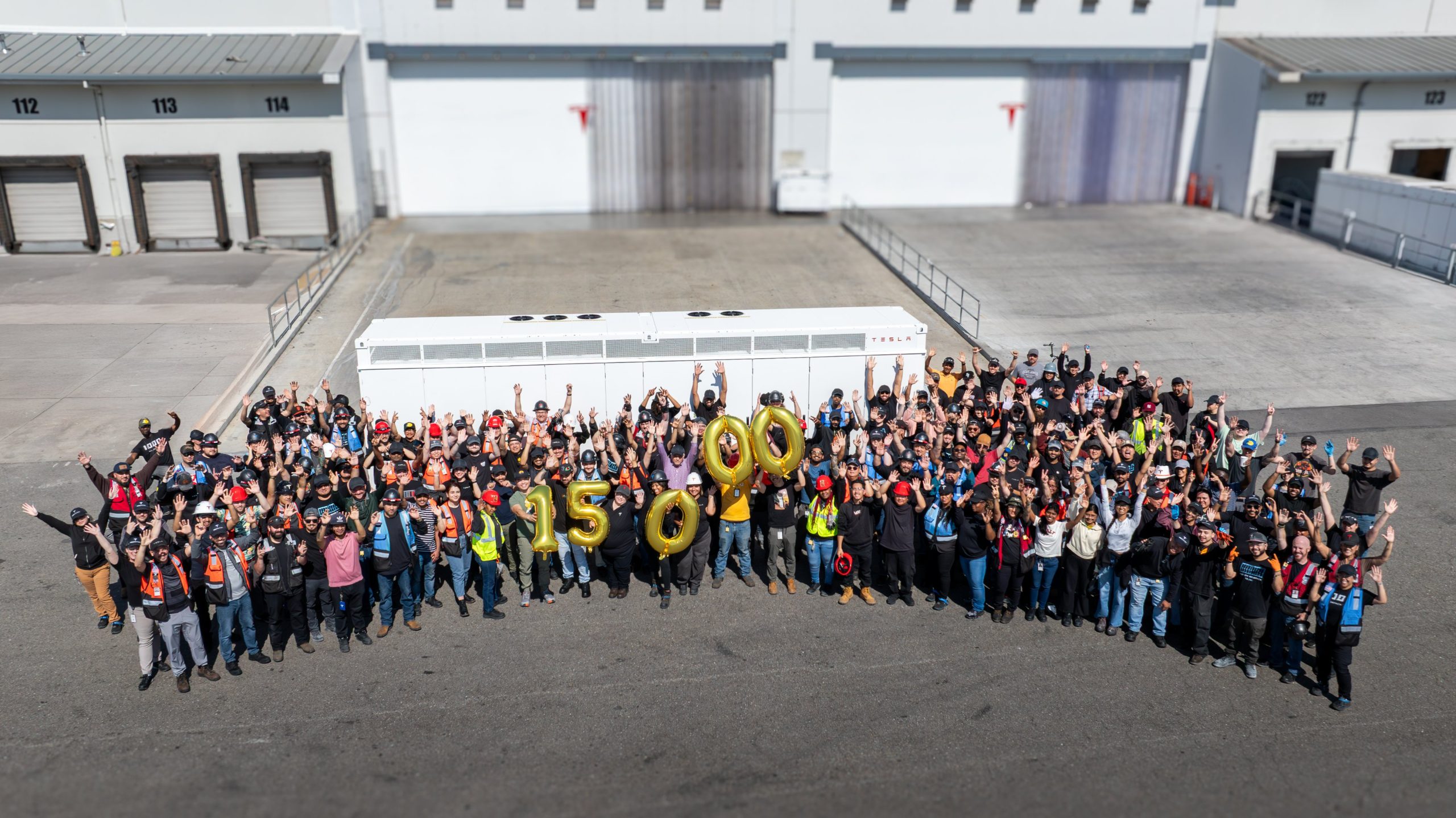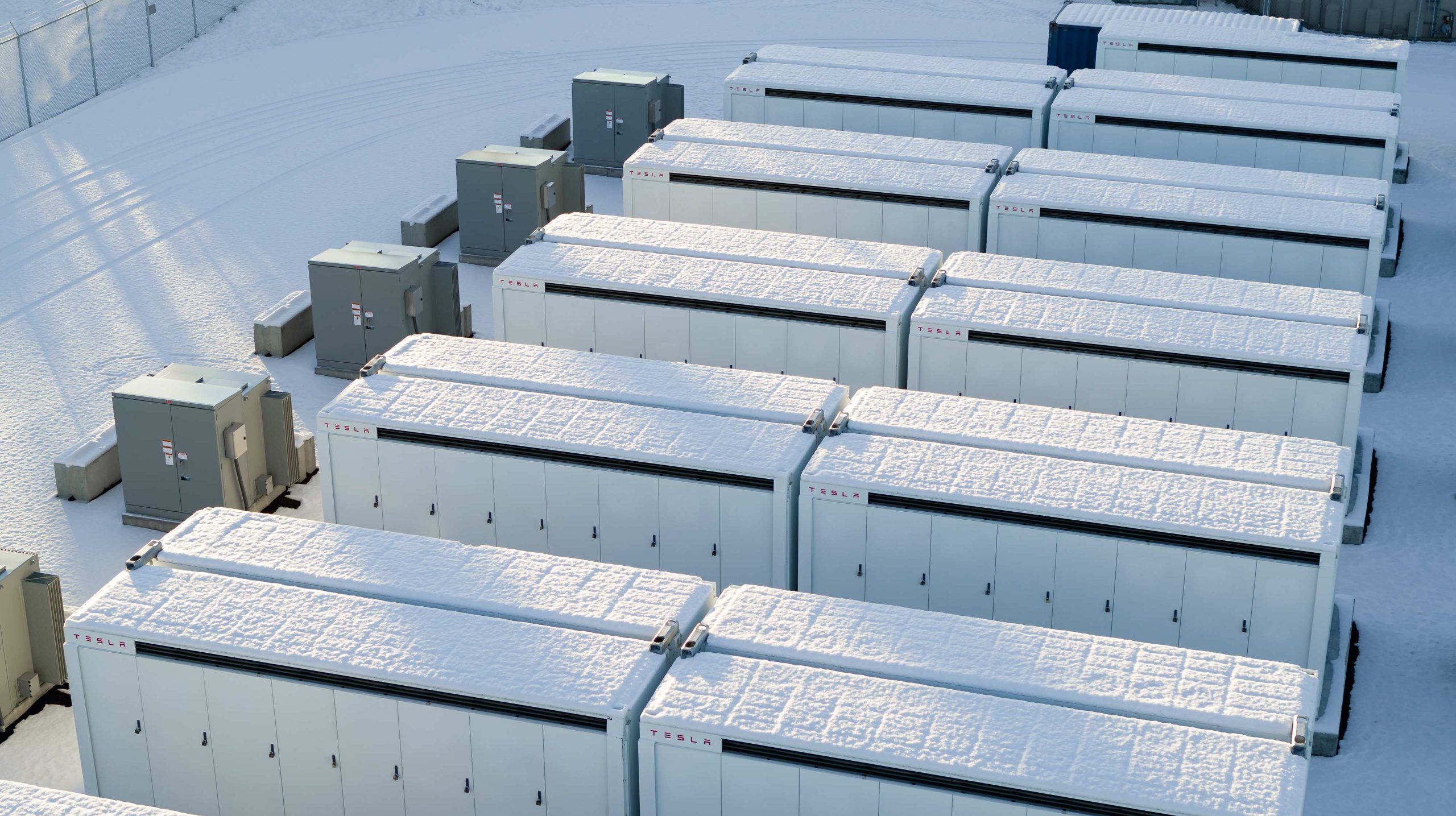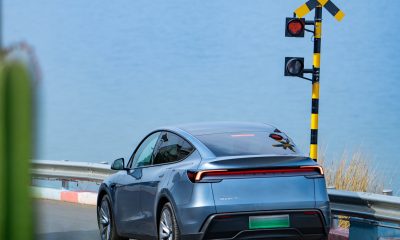

Energy
Tesla “big battery” in Australia is becoming a bigger nightmare for fossil fuel power generators
Tesla’s “big battery” utility-scale Powerpack system at the Hornsdale Power Reserve in South Australia has yielded more than doubled the savings to consumers in 2019 than the year prior as it dominates fossil fuel generators on quicker demand response for the grid.
Hornsdale Power Reserve saved consumers AUD116 million ($75.78 million) in 2019, a big jump from AUD40 million ($26.14 million) savings in 2018.
The Hornsdale Power Reserve, owned and operated by French renewable energy producer Neoen, is home to the largest lithium-ion battery energy storage system in the world with a 100 MW/129 MWh. Tesla Powerpack has been playing a significant role in grid stability since its installation in 2017, a function previously dominated by fossil fuel generators that bring energy prices high during system faults of planned maintenance.
“Hornsdale has just been the best asset for the state, and for us as well, it’s a real success story,” head of development at Neoen Australia Garth Heron said in an interview with RenewEconomy. We have shown that these kinds of systems can work. It saves consumers a lot of money, and it’s something we should be rolling out right across the market.”

The system that covers approximately one hectare of land at the Hornsdale Wind Farm provides grid stability to consumers, storing excess energy during off-peak periods and supplying the grid when renewable outputs are low. When a power plant goes down or when there is greater demand for energy, it is practically a race to meet that demand. Tesla battery-powered HPR beats power providers dependent on fossil fuel and gives consumers a win-win scenario. Consumers benefit from the lower prices of HPR and blackouts that can disrupt businesses or daily household activities are avoided. As South Australia shifts to renewable energy, fossil fuel power generators that did not have potent competition before in the market are now forced to bring their prices down back from the orbit.
A report by Australian consulting firm Aurecon analyzed the impact of the Tesla big battery at Hornsdale Power Reserve in its role in the Frequency Control and Ancillary Services (FCAS) markets. These are basically events that require quick reactions when there are sudden changes in demand or supply.
For example, when the Australian Energy Market Operator called for 35MW of FCAS in January, the Tesla big battery was quick to respond and kept prices reasonable. The prices were as low as AUD270 ($176)/MW instead of hitting AUD11,500($7,511)/MW to AUD14,000($9,143)/MW if supplied by the fossil fuel-dependent generators. When South Australia was “islanded” because of a major outage in Victoria, the HPR was able to save consumers AUD14 million in five hours.
According to Aurecon, the biggest savings came from the raised FCAS and amounted to more than AUD50 million ($32.65 million).
The Hornsdale Power Reserve also has a significant impact on FCAS market regulation. Tesla battery use has pushed the average prices from AUD450 ($294)/MWh two years before the installation of HPR to just over AUD20 ($13)/MWH. With lower prices, battery-generated power practically brought fossil fuel power plants, that ruled the region like cartels, to their knees.
Tesla battery has demonstrated how lithium-ion battery power reserves can play a big role in the security of the overall grid. While fuel fossil-powered generators will take several minutes to feed power to the grid in need, the HPR’s fast-discharge capability beat these options and give consumers access to more affordable energy. This also bodes well for owner and operator Neoen to make most of the potential returns, and of course, for Tesla’s energy business.
Tesla’s big battery has proven that battery storage is a practical option on a grid-scale. And it’s very profitable. The state government only injected AUD4 million ($2.61 million) into the multi-million project.
During the final quarter of 2019, the revenue of the Hornsdale Power Reserve jumped by 56%.
The HPR also announced plans to expand its capacity by 50%, boosting it by 50MW/64.5MWh. The project is expected to be completed in the first half of 2020 and will provide stabilizing inertia services critical to the shift to renewable energy in the region, and help push Australia closer to its goal of being net 100% renewable by 2030.
With the numbers clearly showing the benefits of Tesla’s big battery, it is not just a big banana as Australian prime minister Scott Morrison once said.
Energy
Tesla Lathrop Megafactory celebrates massive Megapack battery milestone
The Tesla Megapack is the backbone of Tesla Energy’s battery deployments.

The Tesla Lathrop Megafactory recently achieved a new milestone. As per the official Tesla Megapack account on X, the Lathrop Megafactory has produced its 15,000th Megapack 2 XL battery.
15,000 Megapack Batteries
Tesla celebrated the milestone with a photo of the Lathrop Megafactory team posing with a freshly produced Megapack battery. To commemorate the event, the team held balloons that spelled out “15,000” as they posed for the photo.
The Tesla Megapack is the backbone of Tesla Energy’s battery deployments. Designed for grid-scale applications, each Megapack offers 3.9 MWh of energy and 1.9 MW of power. The battery is extremely scalable, making it perfect for massive energy storage projects.
More Megafactories
The Lathrop Megafactory is Tesla’s first dedicated facility for its flagship battery storage system. It currently stands as the largest utility-scale battery factory in North America. The facility is capable of producing 10,000 Megapack batteries every year, equal to 40 GWh of clean energy storage.
Thanks to the success of the Megapack, Tesla has expanded its energy business by building and launching the Shanghai Megafactory, which is also expected to produce 40 GWh of energy storage per year. The ramp of the Shanghai Megafactory is quite impressive, with Tesla noting in its Q1 2025 Update Letter that the Shanghai Megafactory managed to produce over 100 Megapack batteries in the first quarter alone.
Tesla Energy’s Potential
During the first quarter earnings call, CEO Elon Musk stated that the Megapack is extremely valuable to the energy industry.
“The Megapack enables utility companies to output far more total energy than would otherwise be the case… This is a massive unlock on total energy output of any given grid over the course of a year. And utility companies are beginning to realize this and are buying in our Megapacks at scale,” Musk said.
Energy
Tesla Megapacks powers the xAI Colossus supercomputer
Tesla Megapacks step in to stabilize xAI’s Colossus supercomputer, replacing natural gas turbines. Musk’s ventures keep intertwining.

Tesla Megapack batteries will power the xAI Colossus supercomputer in Memphis to ensure power stability. The collaboration between Tesla and xAI highlights the synergy among Elon Musk’s ventures.
The artificial intelligence startup has integrated Tesla Megapacks to manage outages and demand surges, bolstering the facility’s reliability. The Greater Memphis Chamber announced that Colossus, recently connected to a new 150-megawatt electric substation, is completing its first construction phase. This transition addresses criticism from environmental justice groups over the initial use of natural gas turbines.
“The temporary natural gas turbines that were being used to power the Phase I GPUs prior to grid connection are now being demobilized and will be removed from the site over the next two months.
“About half of the operating turbines will remain operating to power Phase II GPUs of xAI until a second substation (#22) already in construction is completed and connected to the electric grid, which is planned for the Fall of 2025, at which time the remaining turbines will be relegated to a backup power role,” the Chamber stated.
xAI’s rapid development of Colossus reflects its ambition to advance AI capabilities, but the project has faced scrutiny for environmental impacts. The shift to Megapacks and grid power aims to mitigate these concerns while ensuring operational continuity.
The Megapack deployment underscores the collaboration among Musk’s companies, including Tesla, SpaceX, Neuralink, and The Boring Company. Tesla appears to be the common link between all of Musk’s companies. For example, The Boring Company built a tunnel in Giga, Texas. In addition, Musk has hinted at a potential collaboration between the Tesla Optimus Bot and Neuralink. And from January 2024 to February 2025, xAI invested $230 million in Megapacks, per a Tesla filing.
Tesla Energy reported a 156% year-over-year increase in Q1 2025, deploying 10.4 GWh of storage products, including Megapacks and Powerwalls. Tesla’s plans for a new Megapack factory in Waller County, Texas, which is expected to create 1,500 jobs in the area, further signal its commitment to scaling energy solutions.
As xAI leverages Tesla’s Megapacks to power Colossus, the integration showcases Musk’s interconnected business ecosystem. The supercomputer’s enhanced stability positions xAI to drive AI innovation, while Tesla’s energy solutions gain prominence, setting the stage for broader technological and economic impacts.
Energy
Tesla Energy celebrates one decade of sustainability
Tesla Energy has gone far since its early days, and it is now becoming a progressively bigger part of the company.

Tesla Energy recently celebrated its 10th anniversary with a dedicated video showcasing several of its milestones over the past decade.
Tesla Energy has gone far since its early days, and it is now becoming a progressively bigger part of the company.
Tesla Energy Early Days
When Elon Musk launched Tesla Energy in 2015, he noted that the business is a fundamental transformation of how the world works. To start, Tesla Energy offered the Powerwall, a 7 kWh/10 kWh home battery system, and the Powerpack, a grid-capable 100 kWh battery block that is designed for scalability. A few days after the products’ launch, Musk noted that Tesla had received 38,000 reservations for the Powerwall and 2,500 reservations for the Powerpack.
Tesla Energy’s beginnings would herald its quiet growth, with the company later announcing products like the Solar Roof tile, which is yet to be ramped, and the successor to the Powerwall, the 13.5 kWh Powerwall 2. In recent years, Tesla Energy also launched its Powerwall 3 home battery and the massive Megapack, a 3.9 MWh monster of a battery unit that has become the backbone for energy storage systems across the globe.
Key Milestones
As noted by Tesla Energy in its recent video, it has now established facilities that allow the company to manufacture 20,000 units of the Megapack every year, which should help grow the 23 GWh worth of Megapacks that have already been deployed globally.
The Powerwall remains a desirable home battery as well, with more than 850,000 units installed worldwide. These translate to 12 GWh of residential entry storage delivered to date. Just like the Megapack, Tesla is also ramping its production of the Powerwall, allowing the division to grow even more.
Tesla Energy’s Role
While Tesla Energy does not catch as much headlines as the company’s electric vehicle businesses, its contributions to the company’s bottom line have been growing. In the first quarter of 2025 alone, Tesla Energy deployed 10.4 GWh of energy storage products. Powerwall deployments also crossed 1 GWh in one quarter for the first time. As per Tesla in its Q1 2025 Update Letter, the gross margin for the Energy division has improved sequentially as well.
-

 Elon Musk1 day ago
Elon Musk1 day agoTesla investors will be shocked by Jim Cramer’s latest assessment
-

 News6 days ago
News6 days agoTesla Robotaxi’s biggest challenge seems to be this one thing
-

 News2 weeks ago
News2 weeks agoTesla’s Grok integration will be more realistic with this cool feature
-

 Elon Musk2 weeks ago
Elon Musk2 weeks agoElon Musk slams Bloomberg’s shocking xAI cash burn claims
-

 News2 weeks ago
News2 weeks agoTesla China roars back with highest vehicle registrations this Q2 so far
-

 News2 weeks ago
News2 weeks agoTexas lawmakers urge Tesla to delay Austin robotaxi launch to September
-

 News2 weeks ago
News2 weeks agoTesla dominates Cars.com’s Made in America Index with clean sweep
-

 Elon Musk1 week ago
Elon Musk1 week agoFirst Look at Tesla’s Robotaxi App: features, design, and more















